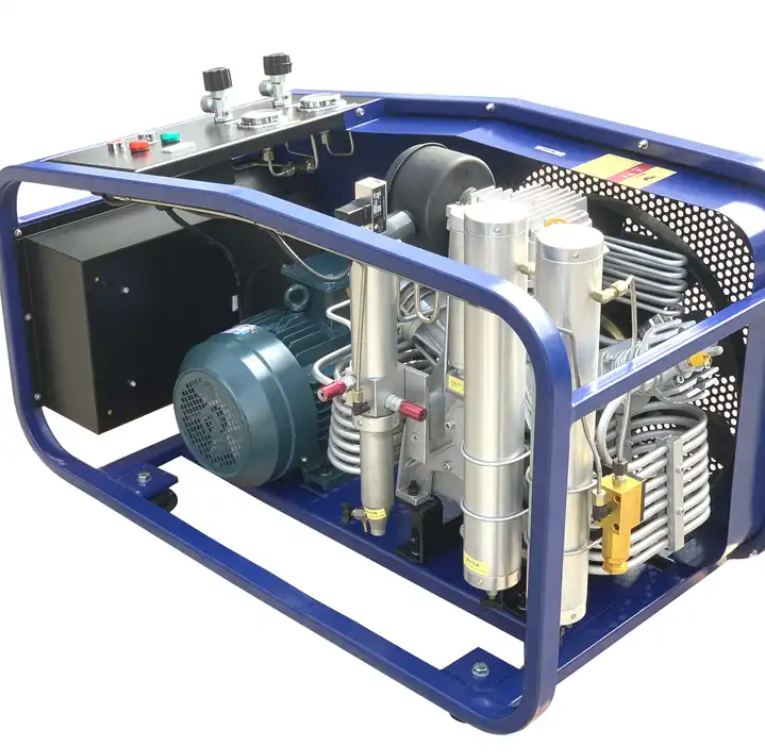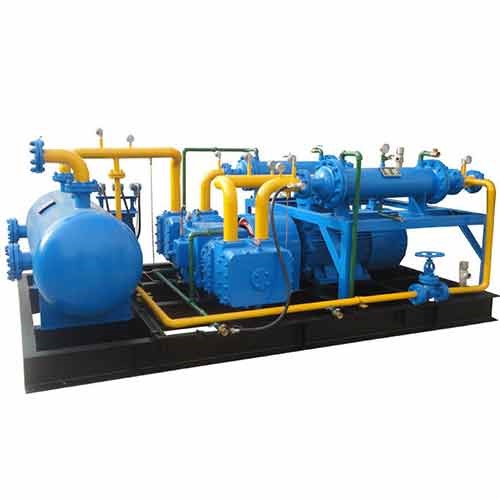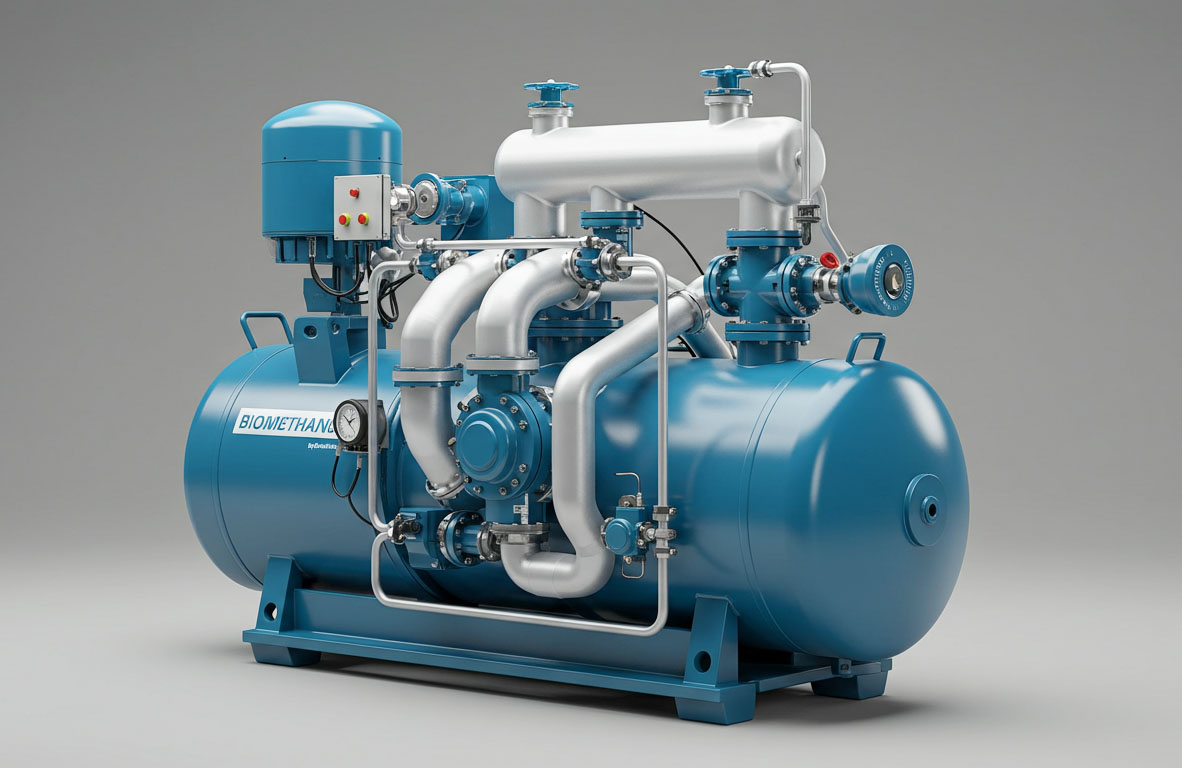CO Compressor: Enhancing Carbon Monoxide Handling
A CO compressor, also known as a Carbon Monoxide compressor, is a specialized mechanical apparatus crafted to elevate the pressure of carbon monoxide gas. This gas plays a pivotal role in a range of industrial and scientific applications. The importance of CO compression stems from its vital function in ensuring the secure and effective management of carbon monoxide, impacting industries where precision in gas pressure control is paramount for safety and operational efficiency.
Unveiling Carbon Monoxide (CO)
Carbon Monoxide (CO)
Carbon monoxide (CO) is a colorless, odorless gas composed of one carbon atom and one oxygen atom. It forms during incomplete combustion of carbon-based fuels like wood, gasoline, natural gas, and oil.
Sources of Carbon Monoxide
- Combustion Engines: Vehicles, generators, and industrial machinery emit CO through internal combustion.
- Household Appliances: Gas-fueled stoves, furnaces, water heaters, and fireplaces can produce CO if not properly maintained or ventilated.
- Industrial Processes: Certain industries, like steel manufacturing and chemical production, release CO as a byproduct.
- Natural Events: Forest fires and volcanic eruptions can also release CO into the atmosphere.
Risks and Safety Precautions
- CO is hazardous due to its invisibility and lack of odor, making detection difficult without specialized equipment.
- Inhaled CO binds tightly to hemoglobin, reducing oxygen transport in the bloodstream.
- Symptoms of CO poisoning include headaches, dizziness, nausea, confusion, and, in severe cases, unconsciousness or death.
- To mitigate risks, ensure proper ventilation, perform regular appliance maintenance, and employ CO detectors.
The Role of a CO Compressor
Introduction to Compressors
Compressors are mechanical devices engineered to raise the pressure of gases by decreasing their volume. They play a vital role in numerous industrial processes, including the compression of carbon monoxide (CO). In this context, CO compressors are indispensable for efficiently and safely handling and transporting this gas.
How CO Compressors Operate?
CO compressors adhere to Boyle’s law, which stipulates that, with a constant temperature, a reduction in the volume of a gas leads to an increase in its pressure. CO undergoes compression within the compressor to fulfill the specific pressure demands of various industrial applications. Here is a simplified overview of the functioning of CO compressors:
- Inlet and Outlet Sections: CO enters the compressor via the inlet section, typically equipped with filters to eliminate impurities and ensure gas cleanliness. After compression, the CO exits through the outlet section, prepared for use or further processing.
- Compression Chamber: The core of the CO compressor lies in the compression chamber, where the actual compression process occurs. Within this chamber, either a piston or a diaphragm reduces the volume of CO, resulting in an elevation of its pressure. This heightened pressure proves crucial for tasks like carbon monoxide storage and transportation.
- Cooling System: CO compression generates heat, and excessive heat can detrimentally affect the compressor’s performance and lifespan. To counteract this, CO compressors are outfitted with cooling systems. These systems dissipate heat, maintaining the compressor’s optimal operating temperature and preventing overheating.
- Control Mechanisms: CO compressors are equipped with control mechanisms that ensure precise pressure regulation and safety. These controls may encompass pressure relief valves, pressure sensors, and automated shutdown systems to prevent scenarios such as over-pressurization or other potentially hazardous conditions.
Applications of CO Compression
Industrial Utilizations
Carbon monoxide (CO) compressor is extensively employed across diverse industrial processes, owing to its versatile attributes. Key industrial applications encompass:

- Chemical Manufacturing: CO functions as a pivotal raw material in the production of various chemicals like methanol, acetic acid, and formaldehyde. The compression of CO to elevated pressures ensures efficient reactions and optimal product yields.
- Petrochemical Sector: The petrochemical industry relies on CO for synthesizing synthetic fuels and petrochemicals. CO compression facilitates the creation of methanol, a fundamental precursor for an array of chemicals and fuels.
- Hydrogen Generation: CO can be converted into high-purity hydrogen through processes like water-gas shift reactions. CO compression is indispensable for producing hydrogen used extensively in electronics and metallurgy industries.
Environmental Control
CO compression plays a pivotal role in environmental management and control:
- Carbon Capture and Storage (CCS): To combat greenhouse gas emissions, CO is captured from industrial processes and power plants, then compressed for safe transportation and underground storage.
- Air Quality Enhancement: CO compression is harnessed in emission control systems within automobiles and industrial facilities to diminish CO emissions and enhance overall air quality.
Safety Measures:
CO compression enhances safety in diverse applications:
- Breathing Gas Mixtures: In the realms of diving and aerospace, compressed CO is incorporated into breathing gas mixtures, enabling extended dive durations and facilitating space exploration.
- Fire Suppression: Compressed CO is integral to fire suppression systems deployed in data centers, museums, and areas with sensitive equipment. Its ability to displace oxygen effectively suppresses fires without causing harm.
- Laboratory and Medical Gases: CO compression is indispensable for delivering precise gas mixtures vital for medical treatments, laboratory experiments, and scientific research endeavors.
Advantages of Utilizing CO Compressors
Improved Efficiency
CO compressors enhance process efficiency by ensuring that carbon monoxide (CO) is readily available at the desired pressure levels. This leads to more effective chemical reactions, particularly in industrial settings where CO is used as a feedstock. The precise control over CO pressure and flow rates achieved through compression contributes to optimized production processes and higher overall system efficiency.
Enhanced Safety
Safety is paramount when dealing with CO, a potentially hazardous gas. CO compressors incorporate safety features, such as pressure relief valves and automated shutdown mechanisms, to prevent over-pressurization and maintain operational safety. Additionally, the controlled compression of CO reduces the risk of leaks or emissions, mitigating potential health and environmental hazards.
Environmental Considerations
CO compression plays a role in environmental responsibility by supporting carbon capture and storage (CCS) initiatives. By compressing CO for safe storage underground, CO compressors assist in reducing greenhouse gas emissions and curbing their impact on the environment. This aligns with efforts to combat climate change and promote sustainable industrial practices.
Cost Savings
Utilizing CO compressors can lead to significant cost savings in various applications. Efficient compression reduces waste and ensures that CO is used effectively, minimizing the need for excess gas production. Additionally, improved process efficiency and reduced emissions can result in lower operational costs and compliance with environmental regulations, ultimately translating into financial savings for businesses and industries.
CONCLUSION
CO compressors serve as indispensable instruments for the efficient management of carbon monoxide (CO). They boost operational efficiency, elevate safety standards, align with environmental responsibility, and result in cost savings spanning various sectors. The ongoing utilization of CO compressors underscores our unwavering dedication to the responsible and efficient handling of this versatile gas.


